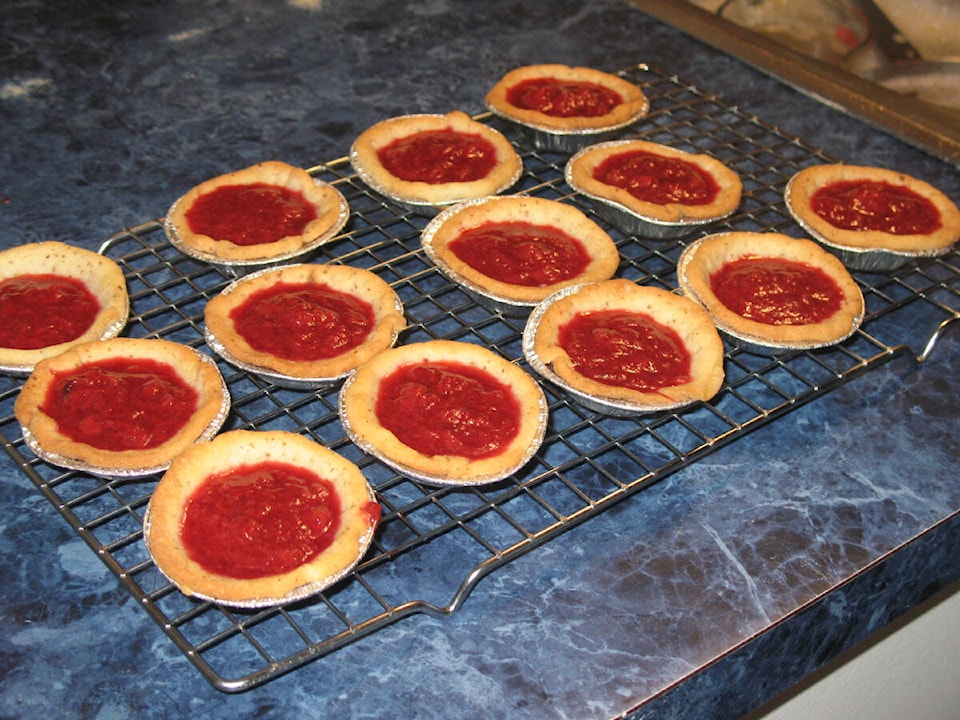By Mary Lowther
Two springs ago I got a bunch of strawberry seedlings from my neighbour Dr. Brenda Bernhardt to plant in my new, huge garden. I situated them a foot apart in three rows down the bed, after laying a quarter inch of compost and organic fertilizer at the rate of four litres per hundred square feet. Things evolved as they should and I spent some time eagerly anticipating the ripe, red, crimson fruit. Sadly, so was the surrounding avian population, and you know what they say about early birds. Evidently that applies to more than worms.
David responded to my expressions of disappointment by custom building a series of wire cages to fit the beds, but we didn’t anticipate the smaller species actually burrowing under the frame to fly about inside! If I hadn’t seen it with my own eyes I wouldn’t believe it, either.
As an aside, fat birds have difficulty fitting through their little holes after they finish eating every berry. So much for last year’s crop.
This year I blocked every possible weakness under the cages to keep out the cute little varmints and have been rewarded with a veritable cornucopia of berries, entirely free from airborne attack. Now all I have to deal with are the hordes of insects, inspired by the cold, wet weather to bite and/or lick every exposed piece of my skin, crawling into open sleeves and jeans. I tuck in every item of clothing and close off wrists and ankles, but somehow they still manage to leave an itchy bite right at the small of my back. At least they aren’t eating my berries, but it annoys me to be reduced to a mere diversion, and I still have to pick those berries before the slugs find them.
Still, I have a success! This year I have a huge crop. I started picking on June 28 and see lots of berries still ripening, so I’m gearing up to freeze a bunch and make tarts and jam. This is my most successful harvest of strawberries since we moved here 15 years ago. The full sun they’re situated in has made a huge difference.
Last fall I thinned out the patch and transplanted seedlings into another bed and will do this again in the fall so I’ll have three beds. David is going to have to build some more cages. When the original bed produces fewer berries, I’ll take it out of production and sow cover crop, allowing two beds to produce in each year and rotating them in the garden like the rest of the vegetables.
I didn’t lay down a mulch this year, but I’ve read that it’s a good idea to protect the plants from harsh winters. In the fall, one should thin the plants out either to hills or matted rows, trim them down to an inch or two and cover them all with three to four inches of straw. I’ll try this with half a row and hope that hordes of slugs don’t proliferate under the straw canopy. Next spring when they sprout up I’ll lay on compost and fertilizer at the same rate as above, and if it’s a hot one like last year, I’ll lay soaker hoses before we put the cages on.
Gardening books that show bumper crops of strawberries dripping from unprotected plants must not live where I live, because if I didn’t cover these berries, the only creatures eating them caw and trill. I won’t dignify it by calling it birdsong until the little gluttons learn to sing in key. Insects are another menace. Doctor Brenda kept chickens and allowed them free reign in the strawberry patch in early spring where they devoured insect eggs and fertilized the crop with processed insects, then she pulled the chickens off before they damaged the plants and covered the patch with mesh. Maybe we need some chickens.
David just loves a project, once he adjusts to the idea.
Please contact mary_lowther@yahoo.ca with questions and suggestions since I need all the help I can get.
